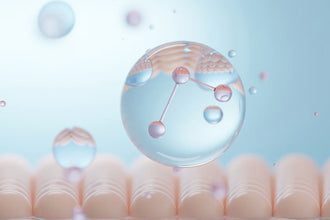Scar Tape Versus Silicone Gel: A Detailed Comparison for Informed Scar Care Choices
Introduction
In the realm of scar management, two prominent options emerge: scar tape and silicone gel. Both are lauded for their effectiveness in improving the appearance of scars, but they serve different needs and preferences. This article provides an in-depth comparison of scar tape and silicone gel, aiming to empower individuals with the knowledge to make informed decisions about their scar care.
Understanding Scar Tape
Scar tape, often made from medical-grade silicone, is designed to be applied directly over the scar. It works by creating a protective barrier that maintains the moisture balance of the scar tissue.
Advantages:
- Easy to use and apply
- Provides physical protection from environmental factors
- Can be worn discreetly under clothing
Disadvantages:
- May cause irritation or discomfort in sensitive skin areas
- Limited flexibility in covering irregularly shaped or moving parts of the body
![]()
Understanding Silicone Gel
Silicone gel is a clear, non-greasy formula that can be applied to the scar area. It forms a thin, waterproof layer over the scar, offering a similar mechanism of action to silicone tape but in a different form.
Advantages:
- Suitable for use on facial scars or areas with frequent movement
- Invisible once dried, allowing for makeup application over it
- Generally well-tolerated by all skin types
Disadvantages:
- Requires regular reapplication to maintain effectiveness
- Some users may prefer not to apply a gel formula to their skin
Comparative Analysis

To provide a clearer understanding of how scar tape and silicone gel stack up against each other, here are key aspects to consider:
-
Application Ease: Scar tape offers a simple, stick-on solution, whereas silicone gel needs careful application and time to dry.
-
Comfort and Wearability: Tape provides a constant barrier but may be noticeable under tight clothing. Gel offers a barely-there feel but lacks physical protection.
-
Reusability and Cost: Silicone tape can be more cost-effective for long-term use since it's reusable, while gel requires ongoing purchases.
-
Effectiveness in Scar Management: Both forms are effective in hydrating the scar and reducing its appearance, though individual results may vary based on scar type and personal skin response.
| Criteria | Scar Tape | Silicone Gel |
|---|---|---|
| Application | Direct, adhesive application to the scar | Applied as a gel and allowed to dry |
| Visibility | Low-profile, may be visible under tight clothing | Invisible once dried, suitable for all areas |
| Comfort | Secure fit, minimal movement disruption | Lightweight, no physical barrier |
| Reusability | Can be reused until adhesive wears off | Single-use, requires regular reapplication |
| Ideal Use Cases | Larger, flat scars not subject to stretching | Scars in high movement areas, facial scars |
Making an Informed Choice
When deciding between scar tape and silicone gel, consider the following:
- Scar Location and Size: Larger or more exposed scars might benefit from the discreet protection of tape, while smaller or facial scars may be better suited to gel.
- Lifestyle and Comfort: Active individuals or those with sensitive skin may have a preference based on comfort and ease of use.
- Personal Preference: Ultimately, the choice may come down to personal preference in terms of feel, appearance, and application method.
| Factor | Consideration for Scar Tape | Consideration for Silicone Gel |
|---|---|---|
| Scar Location and Size | Larger, less mobile areas | Any size, particularly effective on the face |
| Lifestyle and Comfort | Active lifestyles may require stronger adhesion | Less restrictive, no need for adhesive |
| Application Preference | Prefers discreet, all-day wear | Prefers flexibility, ease of reapplication |

Conclusion
Both scar tape and silicone gel offer viable pathways to improved scar healing and management, each with its own set of benefits and considerations. By understanding the unique properties and potential drawbacks of each option, individuals can make a choice that best suits their scar care needs and personal preferences, leading to a more positive healing journey.
References:
https://pubmed.ncbi.nlm.nih.gov/26947692/
https://www.ncbi.nlm.nih.gov/pmc/articles/PMC6533878/
https://www.ncbi.nlm.nih.gov/pmc/articles/PMC3052954/
General Disclaimer: All information here is for educational purposes only and is not meant to cure, heal, diagnose nor treat. This information must not be used as a replacement for medical advice, nor can the writer take any responsibility for anyone using the information instead of consulting a healthcare professional. All serious disease needs a physician.















